There are few nations who have succeeded in leaving a definitive mark at the salad bar. While honorable mentions include Greece’s ellinki salata, an Italy’s insalata Caprese and Thailand’s green papaya salad, our favorite national salad of the week has to be Indonesia’s gado gado.
A melee of steamed and fresh vegetables, a mix of veggie proteins and a deliciously creamy peanut topping, gado gado packs a nutritional and flavorful double-whammy.

FOOD OF THE BEAUTIFUL PEOPLE
Gado gado hails from the island of Java, one of the larger of the 13,466 islands that make up the Indonesian archipelago. Also known as lotek, the dish originates from the kitchens of the Sunda people who mostly occupy the western half of the island. The Sundanese are known to have good looks, soft skin and a love of fresh vegetables, traits which most beauty experts will tell you are intrinsically connected.
The Sunda – or Orang Sunda, as they are known in Indonesia – make up over 15% of Indonesia’s population, numbering 34 million at the last count. Once lords of their own kingdom, Pajajaran (1333-1579), the Sundanese have mostly been under Javanese and Dutch rule for the last few centuries, having garnered a reputation for themselves of fighting a holy war against the Dutch in the 1880s and after World War II.
The cooler highlands of Pajajaran must have allowed for the cultivation of crops that were more difficult to grow at the hotter, more humid sea-level, since purely vegetable dishes like gado gado are not so common in the rest of the country. In terms of locally-grown greens, some wild leaves and the young shoots of plants grown for their fruit or tubers (like starfruit, papaya, sweet potatoes and tapioca) are cooked as vegetables as are easily-cultivated veg like runner beans, pumpkins and water spinach.
THE ORIGINAL SPICE ISLANDS
Other ingredients in the Indonesian arsenal included spices traded by Arabs and Indians, who came to the archipelago on the trail of the original Spice Islands which were, in fact, Indonesian. Malaku, or the Moluccas – a small group of islands in the north-east of the country, in the direction of New Guinea – were for centuries the largest producers of pepper, mace, nutmeg and cloves in the world.
It was the Spanish who brought chilies to Asia from the New World, and the Dutch who contributed a whole new lineup of vegetables to be grown in some of the country’s cooler areas, like cauliflower, carrots, cabbage and tomatoes. The Chinese introduced a number of long-lasting staples, including noodles, soy sauce, tofu and tempeh. We find it hard to see how, given this comestible bounty, one wouldn’t come up with something as colorful as gado gado sooner or later.
You Might Also Like….
If you love salads and peanut sauce, you’ve got to try our other Vietnamese Peanut sauce for Spring Rolls (but also very yummy on salads and vermicelli noodle bowls), or try our Thai Papaya Salad
ABOUT THE RECIPE
Gado gado can vary wildly depending on which part of Indonesia you’re eating it in. Java itself is split down the middle with the eastern and western halves proffering very different versions of the same dish. In the east, whose main town is Surabaya, you might find gado gado siram, which means that the ingredients get prepared first and the sauce is then poured over the top of the preparation. In the west of the island, however, you’re more likely to find a style of gado gado that is pre-mixed with the peanut sauce and then served all together on your plate. In Jakarta, you might taste a gado gado boplo that uses cashews instead of peanuts.
The great thing about gado gado (whose name literally means ‘mix-mix) is its versatility. You can make the salad your own by adding any vegetable to it that strikes your fancy – we’ve seen tomatoes, cucumbers, spinach, snap peas, baby corn and sweet potatoes in the mix-mix as well as any variety of proteins from eggs and tofu to strips of tempeh. Vegans can cut the egg and the shrimp crackers, the peanut-sensitive can switch out for cashews – gado gado is a blank canvas of your own making. Our recipe below is just a suggestion.
GETTING THE VEGGIES RIGHT
Start with getting your vegetables right. For the vegetables you are steaming, you want to make sure you get them al dente and not too soft, otherwise you’ll end up with a plate of mush. Plus, the less you steam them, the more nutrients they’ll keep!
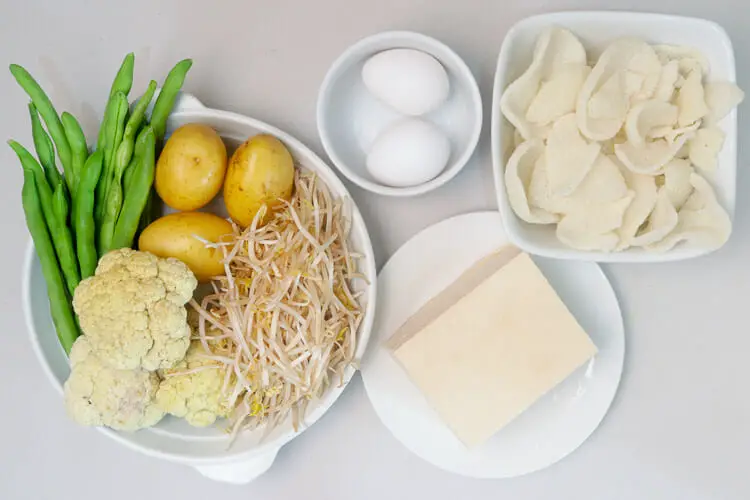
Steam your vegetables in a steaming basket. That way you can keep checking in on them every few minutes so that they don’t become overdone. (The transition from perfect to disappointingly gloopy happens all too quickly!)

Meanwhile, heat some oil in a pan and fry the tofu until it takes on a golden hue and becomes a little crispy on the outside.
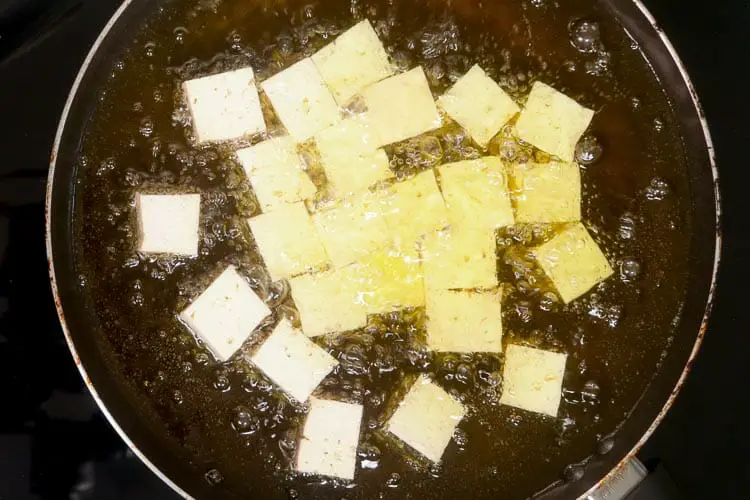
Hard-boil the eggs. Bring the water to boil (we like to keep the eggs in from the beginning) and leave to simmer for 5 minutes.

Now get down to the sauce. This is where the true artistry of the gado gado comes in to play. Get your ingredients to hand and have a blender ready, unless you want to go true Indonesian-style with a mortar and pestle. Process the garlic, peanut butter, half of the coconut milk, the red chilies, the terasi, and the coconut sugar until they make a smooth paste.
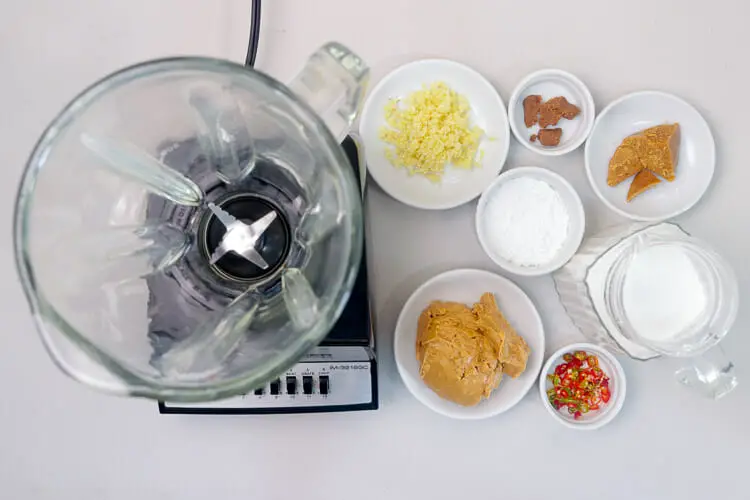
Heat the other half of the coconut in a pot on medium heat, and add the puree blend. Stir occasionally and keep cooking until the liquid boils. The volume will start to reduce and the sauce surface will start to look oily. At this point, add the rice flour mixture. Keep stirring the bubbling mixture for about another 5 minutes, then remove from the heat.
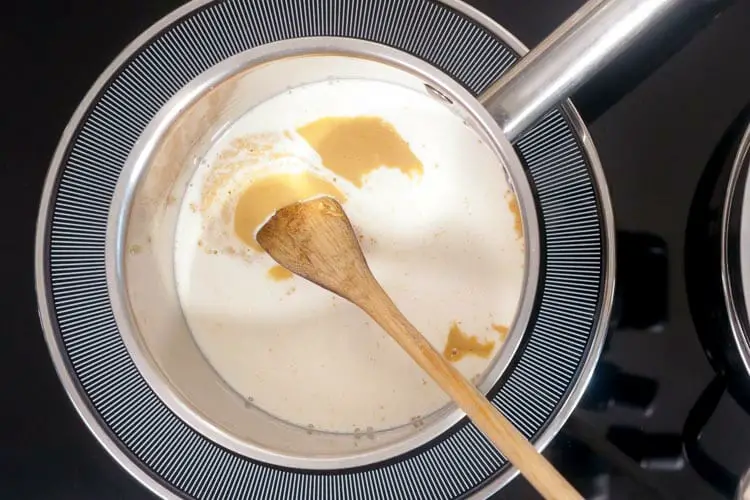
You can now decide whether to serve your gado gado the east or west Javan way; if west, then put all of your ingredients into a bowl and mix in a few spoonfuls of the peanut mixture until you get a happy consistency. Otherwise, try the east Javan method of composing your ingredients onto a plate or shallow bowl first, starting with the vegetables, adding the boiled egg halves and tofu cubes as well as a sprinkling of cilantro, then pouring the peanut sauce over the top. Finish off your vegetable tower with a couple of prawn crackers.
Selamat makan!
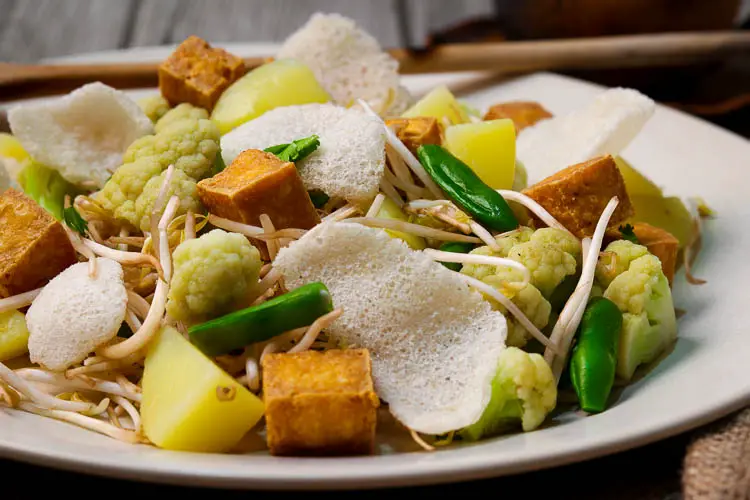
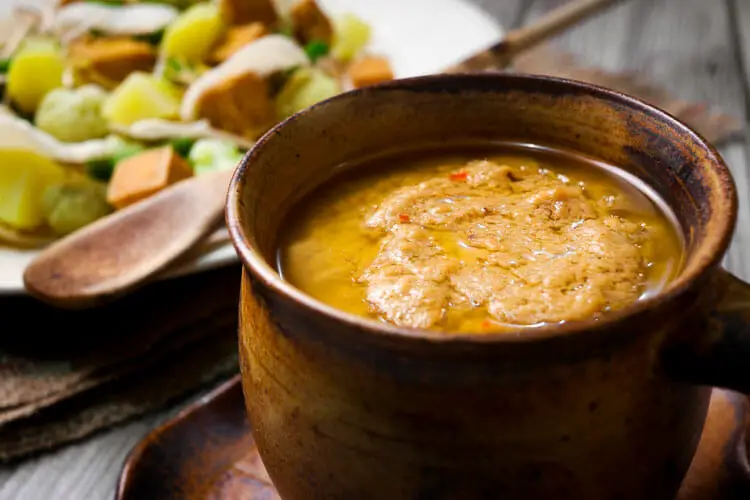
OUR TAKE ON THE RECIPE
Our favorite thing about the gado gado was the sauce whose intense zing is quite unparalleled with the exception of Indonesian Satay sauce, which basically uses the same ingredients. It grounded the otherwise very light and healthy dish in a blanket of flavor.
We decided to stray a little from the source recipe and not include salad vegetables like tomatoes and cucumber in our gado gado, feeling that the potatoes, cauliflower and beans would lend more body, while the bean sprouts still provide a good crunch. Some recipes also call for tempeh, but we thought in this case since there was already so much tofu in the pan that adding more protein might be overkill.
The terasi that’s called for to really nail the flavor of the peanut sauce can easily be bought online, but you can also substitute it with fish sauce (on Amazon) or anchovies without tasting too much difference. Also, if you have the time, do take a few minutes to maximize the taste of your tofu by pressing all the moisture out of it, marinating it, then pan-searing it.
Finally – and for all we know, we might be committing high apostasy by saying this – we have to say we thought the universal gado gado staple of the prawn cracker topping to be a bit out of place flavor-wise in this dish. The next time we prepare it, we think some ground peanuts sprinkled across the top would do a very similar job in upping the crunch factor.


Gado Gado
- Total Time: 30 minutes
Ingredients
For the salad
- 6oz green beans, cut into 2-inch pieces, steamed
- 400g cauliflower – steamed
- 6oz beansprouts – fresh
- 12oz potatoes – cut into 1-inch chunks, steamed or boiled
Salad toppings
- 2 hard-boiled eggs, peeled and halved
- 1lb Cubes of deep-fried tofu, 1 inch
Other toppings
- Prawn crackers
- Cilantro
Peanut sauce
- 5 cloves garlic, fried or roasted
- 5oz roasted/fried peanuts (or 1/2 cup of organic crunchy peanut butter)
- 2 cups coconut milk
- 5 red chilies, discard the seed and stir fried/fried
- 1/2 tsp terasi (dried shrimp (on Amazon) paste), toasted
- 1 oz coconut sugar
- 1–2 tbsp rice flour dissolved in a small amount of water
Instructions
- Prepare the vegetables as necessary. Steam the beans, cauliflower and potatoes to be al dente. Allow to cool.
- Fry the tofu cubes until golden; hard-boil the eggs.
- Process the garlic, peanut butter, half of the coconut milk, the red chilies, the terasi and the coconut sugar in a food processor (on Amazon) or blender.
- In a sauce pot, combine the processed mixture with the rest of coconut milk, stir and turn the stove to a low-medium heat. Stir occasionally.
- Cook the sauce until it boils, the volume starts to reduce and the sauce surface looks oily. Add the rice flour mixture. Keep stirring until it bubbles and for another 5 minutes, then remove from the heat.
- To serve: first mix all the vegetables gently together. Plate up individual portions, with a heap of the vegetables at the base.
- Top with the salad toppings and cilantro.
- Pour the sauce over the whole thing. Garnish with a couple of prawn crackers.
- Prep Time: 10 min
- Cook Time: 20 min

